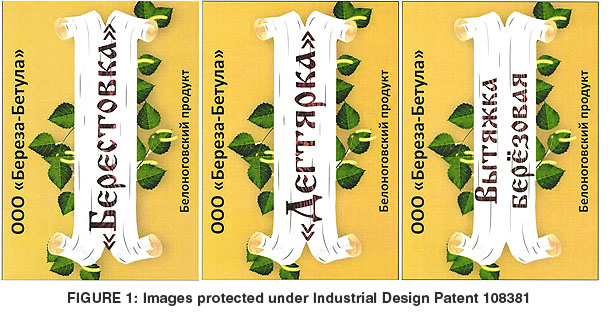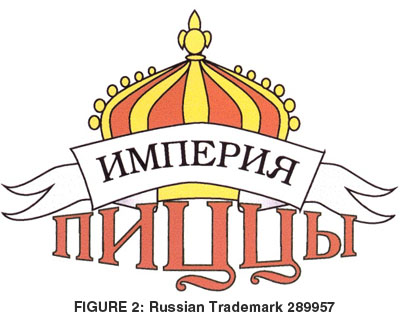Building an effective enforcement strategy to fight unfair competition in advertising
28 October 2019This article first appeared in World Trademark Review issue 81, published by Globe Business Media Group – IP Division. To view the issue in full, please go to www.WorldTrademarkReview.com
The Federal Law on Advertising (38-FZ, 13 March 2006) regulates advertising in Russia and is enforced by the Federal Antitrust Authority (FAS), decisions from which may be appealed to commercial courts. The FAS normally issues clarification letters and guidelines dedicated to practical enforcement issues, which play an important role in advertising cases.
The Federal Law on Competition Protection (135-FZ, 26 July 2006) is the main legislative act regulating competition in this sphere, with the FAS as its enforcing authority. The bulk of the law deals with dominant position issues, the prevention of cartels and antitrust control in merger and acquisitions. Chapter 2.1 is dedicated to the prevention of unfair competition.
Article 5 of the Advertising Law expressly bans unfair advertising, including unfair competition.
Understanding the correlation between unfair advertising and unfair competition under Russian law, as well as enforcement mechanisms triggers, is crucial for businesses operating in Russia, as it allows them to fight effectively against unfair marketing practices and to properly evaluate risk.
Forms of unfair competition
Article 4(9) of the Competition La defines ‘unfair competition’ as any business activities aimed at gaining advantage in commerce, contrary to Russian legislation, business customs, requirements of good faith, reason and justice, and that have caused or may cause damage to competitors or their business reputation.
Chapter 2.1 of the Competition Law provides a non-exhaustive list of the activities constituting unfair competition:
- defamation – disseminating false, inaccurate or distorted information that could result in losses to a competitor and/or damage their business reputation (the Competition Law sets out various examples);
- misrepresentation – misleading consumers regarding quality, quantity, manufacturing, price and other characteristics;
- incorrect comparison:
- using comparative expressions (eg, ‘best’, ‘first’, ‘number 1’, ‘very’ and ‘only’), which suggest advantages without any indication of a specific comparative criteria that could be objectively tested, or express false, imprecise or distorted information;
- relying on comparisons, which lack any indication of specific comparative criteria, or comparison results, which cannot be objectively tested; and
- relying on comparisons based exclusively on insignificant or incomparable facts and which contain negative views on a competitor and/or their goods;
- unfair acquisition and the use of exclusive rights as a means of individualisation – the provisions are useful in cases involving trademark trolls;
- unauthorised use of a competitor’s intellectual property;
- copying and imitation (eg, of a product’s packaging);
- illegal receipt, use or disclosure of information constituting a commercial or other secret protected by law; and
- other forms of unfair competition – examples may be found in other special laws, particularly those dealing with holding major sporting events (eg, prohibition of ambush marketing).
Concurrence between Competition Law and Advertising Law
While holding that unfair advertising takes place in cases of unfair competition, the Advertising Law separately names ‘incorrect comparison’ – which is also listed among the forms of unfair competition under the Competition Law.
Further, the Advertising Law also provides a list of banned false advertising practices (with around 19 examples). Among these is the dissemination of advertising that contains untrue information regarding:
- the advantages of the advertised product over competing goods;
- any characteristics of the product, including its nature, composition, method and date of manufacture, purpose, consumer properties, conditions of use, place of origin, presence of a certificate or declaration of conformity, signs of conformity and circulation marks for market, service life and shelf life of the goods; and
- other various terms relating to the commercialisation of the product and its promotion.
The Advertising Law also expressly bans advertising that lacks essential information regarding:
- the advertised products;
- terms of sale or use;
- whether the information content is distorted; and
- whether consumers are being misled.
 While there are a several similarities between the two laws, thery diverge with regards to enforcement. The Code of Administrative Offences also provides different administrative fines: Article 14.3 for advertising cases and Article 14.33 for unfair competition cases.
While there are a several similarities between the two laws, thery diverge with regards to enforcement. The Code of Administrative Offences also provides different administrative fines: Article 14.3 for advertising cases and Article 14.33 for unfair competition cases.
Practitioners should understand that the Advertising Law defines ‘advertising’ as information, disseminated by any means, in any form and with the use of any activities, addressed to an unlimited number of persons and aimed at gaining attention for the advertised object, generation and support of interest in it and its market promotion.
It sets out various exemptions under which information is not treated as advertising - including product packaging and marketing analytics reports. While the law may not apply, the information that they contain should still be analysed taking into account the requirements of the Competition Law.
In Resolution 58 (8 November 2012) the Supreme Commercial Court resolved the concurrence between competing provisions:
- Administrative liability for unfair competition is set out under Article 14.33 (unfair competition) of the Code of Administrative Offences; however, if the relevant activities breach the Advertising Law, liability emerges under Article 14.3 (breach of the advertising legislation).
- If false, imprecise or distorted information that may result in damage to a competitor (or its business reputation), or incorrect comparison or other information is contained in the messages treated as advertising, administrative liability falls under Article 14.3 (breach of the advertising legislation), not Article 14.33 (unfair competition).
- If information that appears to be unfairly competitive is disseminated by advertising messages and other means (eg, product packaging and correspondence with counterparties), the party responsible is liable under Article 14.33 (unfair competition), not Article 14.3 (breach of the advertising legislation).
Examples of unfair competition and unfair advertising cases
Case P-7/2019, handled by the FAS Kurgan division (15 February 2019), involved enforcement of the Industrial Design Patent RU 108381 (see Figure 1). The relevant design patent protects a picture of a label for a birch-bark beverage (birch-bark products are traditional Russian souvenirs).
The patentee filed a complaint with a local division of the FAS claiming that the competitor’s website offered for sale products using the patented labels. The FAS held that the advertising of the competing products using the patented labels was unfair advertising in the form of unfair competition and subsequently issued an injunction.
 Another notable case involved the enforcement of Russian Trademark 289957 (Empire of Pizza) (see Figure 2)covering pizza and services for production and delivery.
Another notable case involved the enforcement of Russian Trademark 289957 (Empire of Pizza) (see Figure 2)covering pizza and services for production and delivery.
The trademark owner filed a complaint with the FAS claiming that online advertising by the delivery services aggregator with use of the trademark was in fact aimed at generating attention for the competing businesses. With the ruling on Case 4-14.33-114/77-14, the FAS qualified such activities as unfair competition and proceeded with an administrative fine.
Recent clarifications by the Supreme Court on 23 April 2019 are also significanct. The court stressed that the use, as a criterion for displaying a contextual advertisement, of keywords and phrases that are identical or similar to the point of confusion with another means of individualisation owned by another party, taking into account the purpose of such use, can be recognised as an act of unfair competition.
Comment
Taking competing advertising and marketing materials into consideration is vital. It is advisable from the outset to take account of the relevant legal provisions so as to build up an effective enforcement strategy. One strategy may be to file a complaint with the FAS or to enter classic civil litigation, while in other cases direct communication with the host provider as an information intermediary could be considered.
Nevertheless, irrespective of the forums chosen, Russian law provides an effective legislative framework through which to fight unfair advertising, even to the point of unfair competition.










